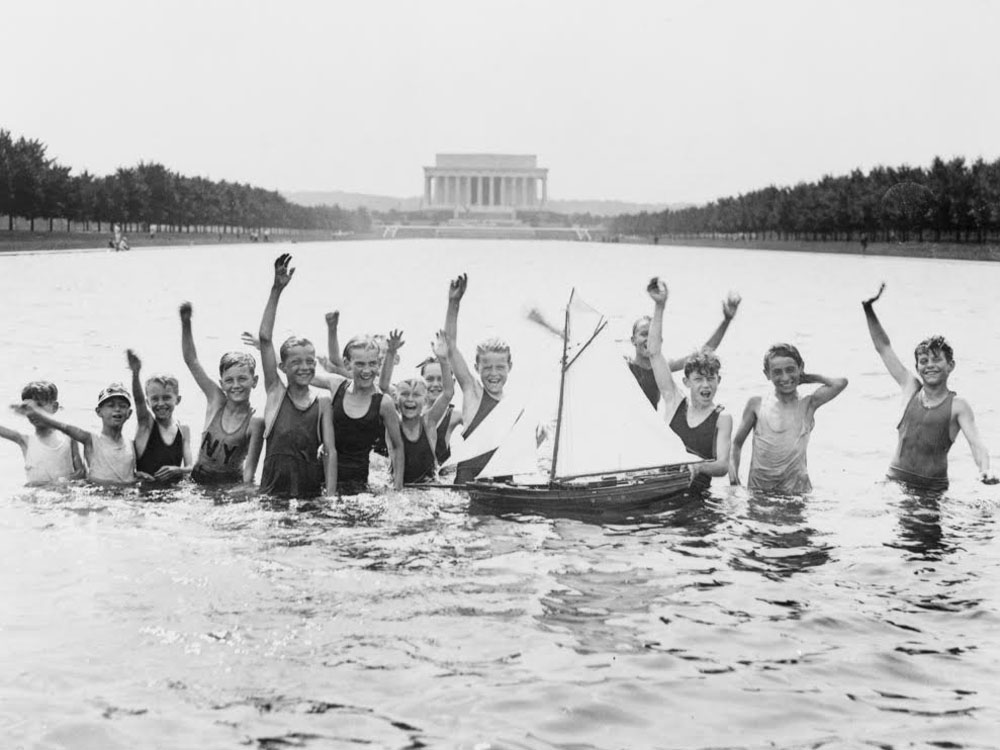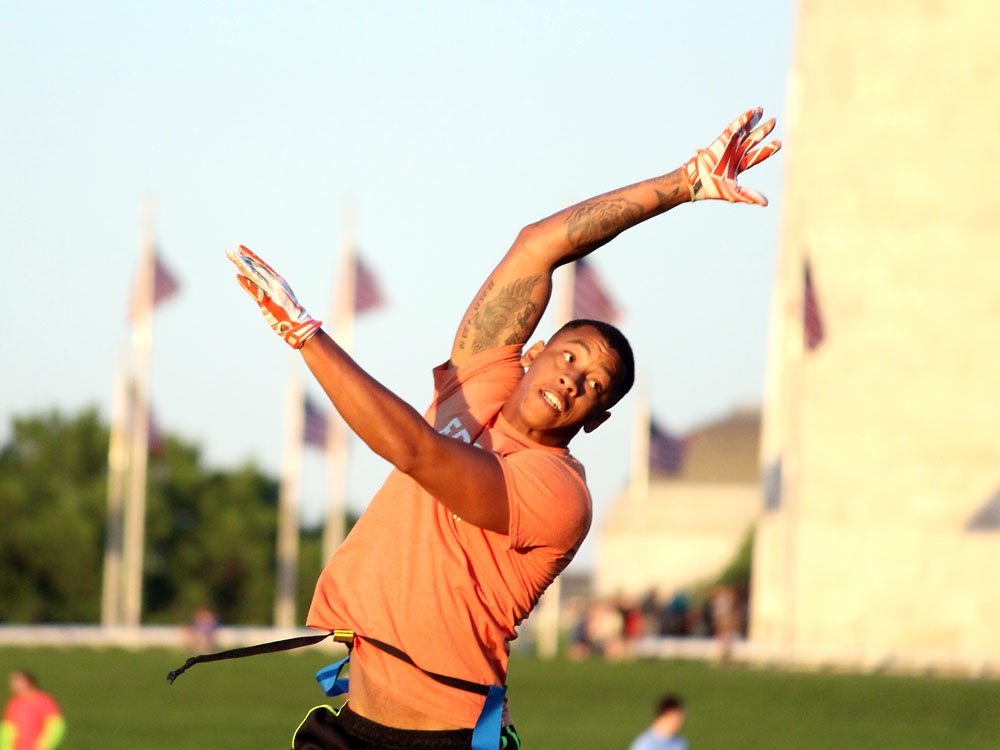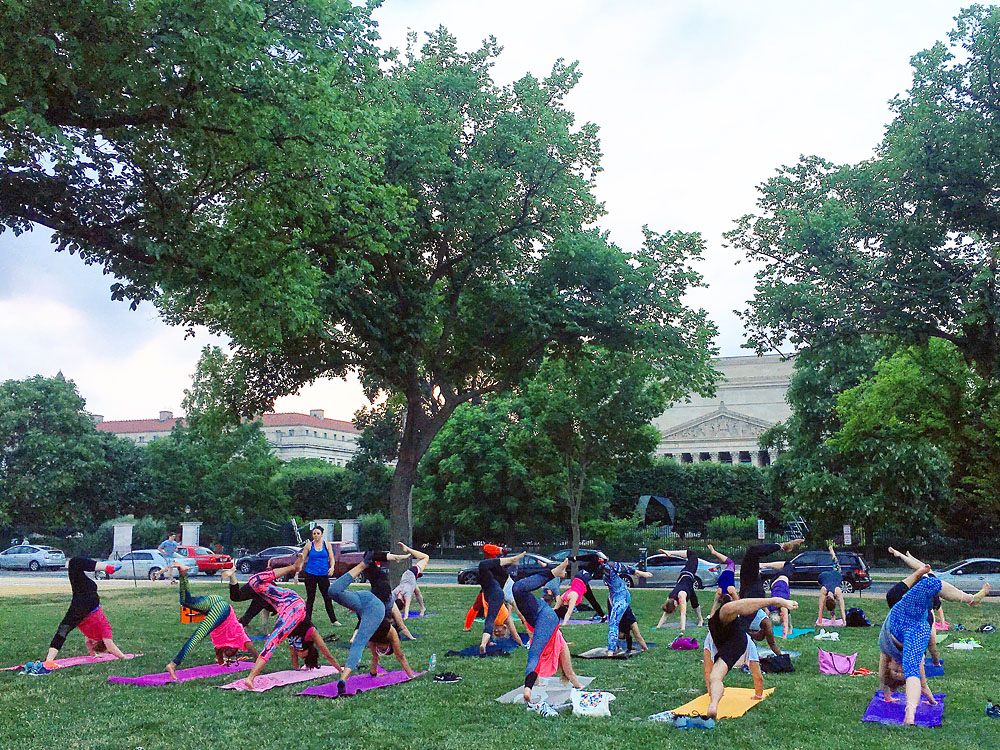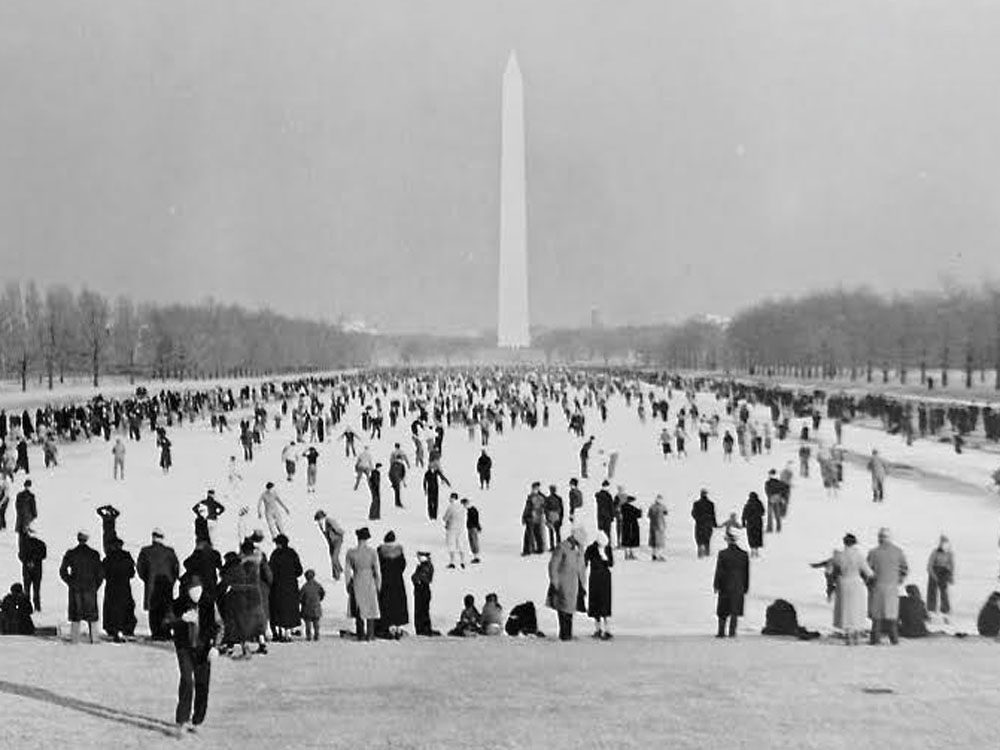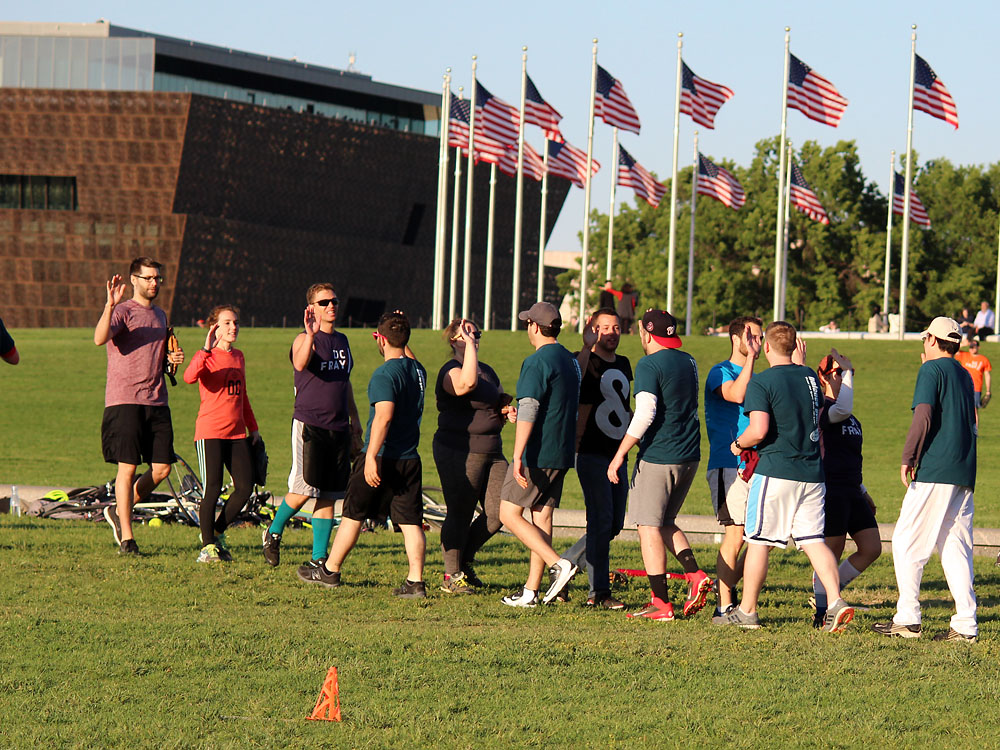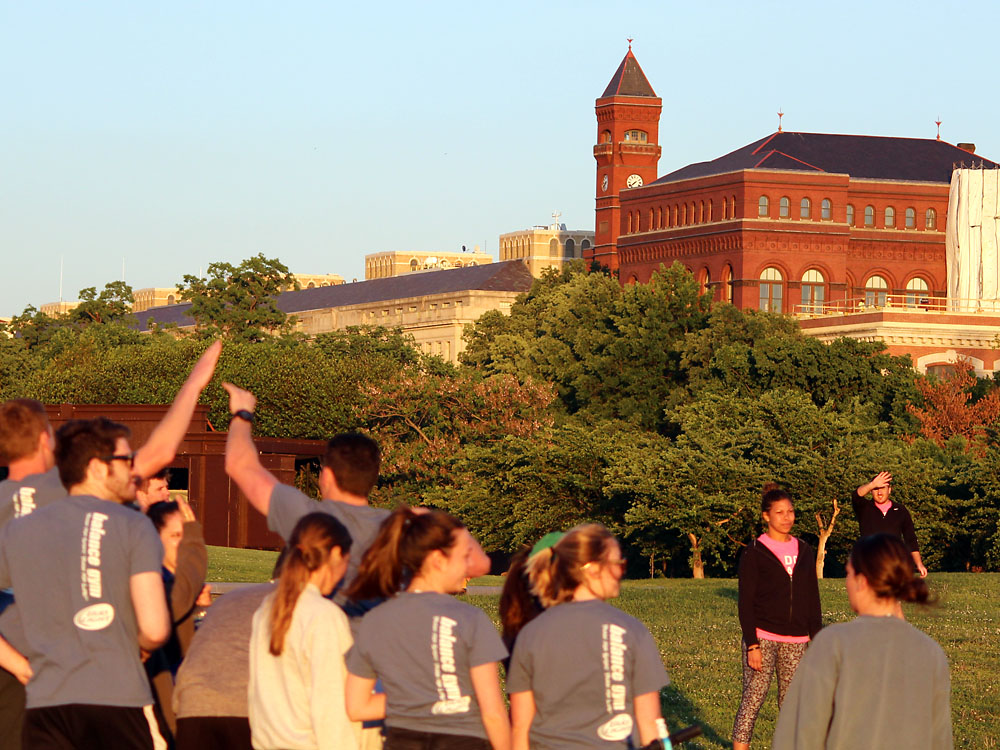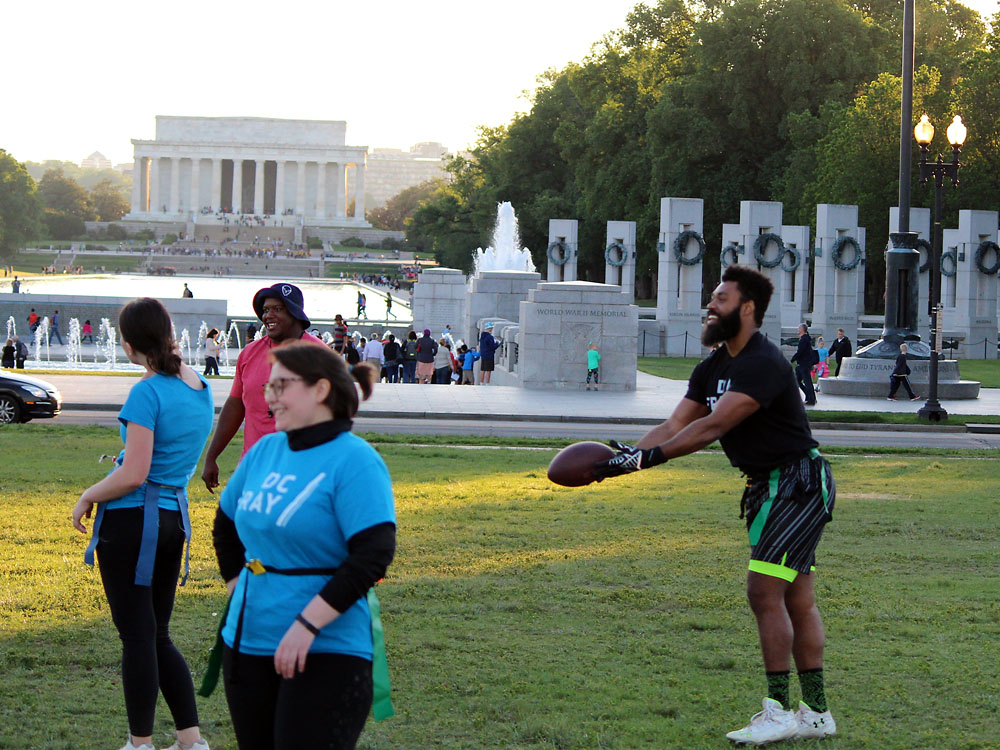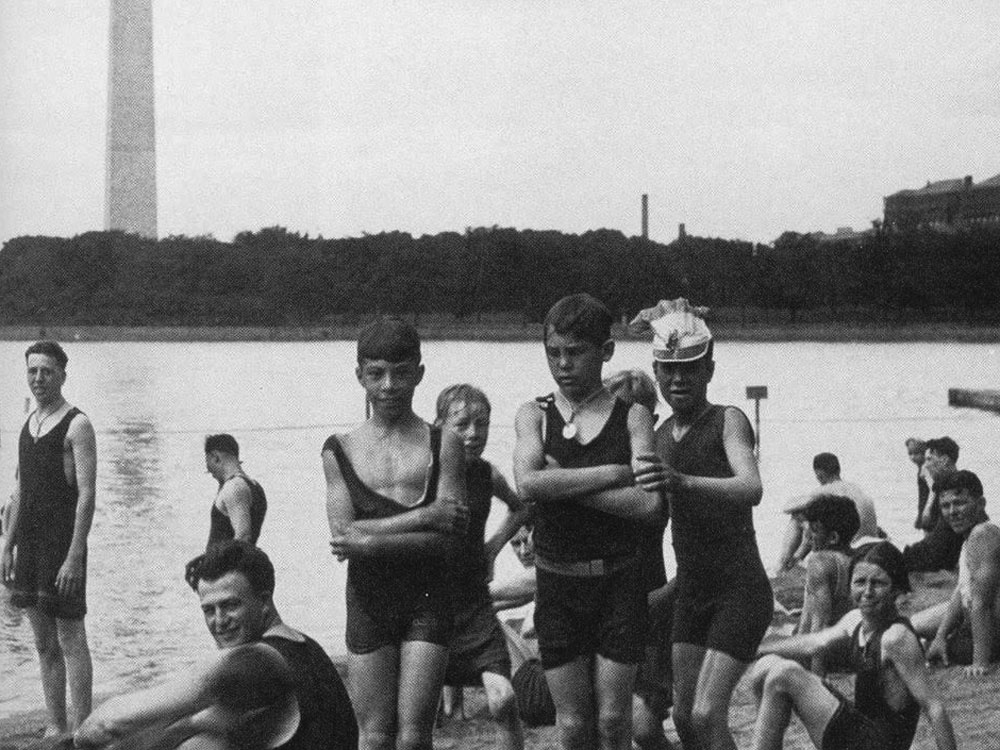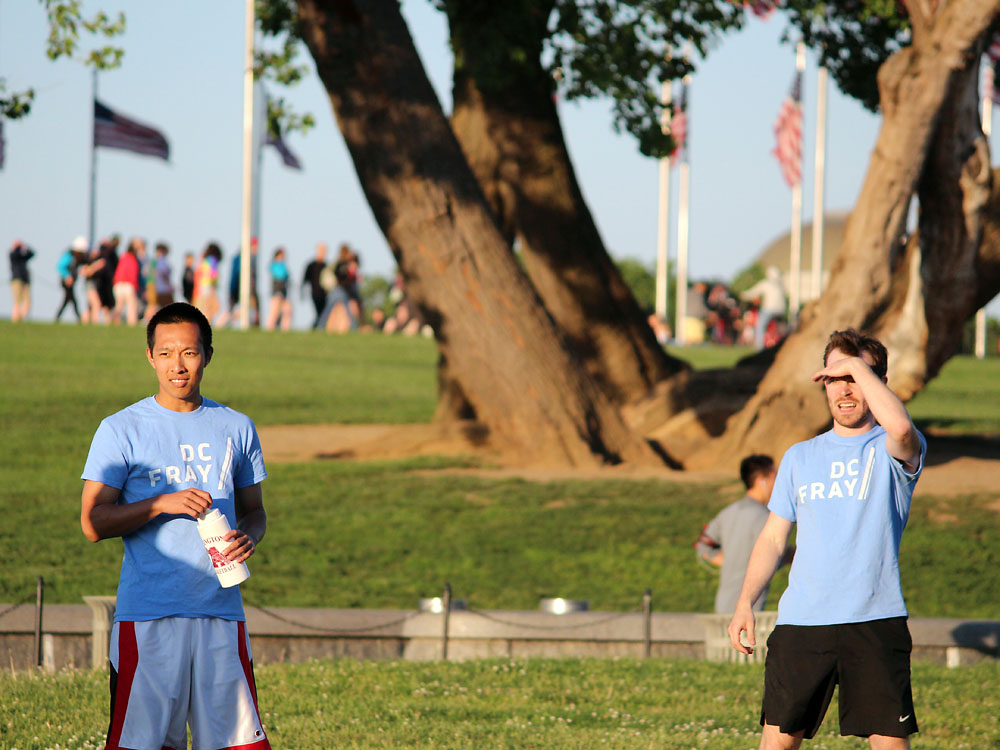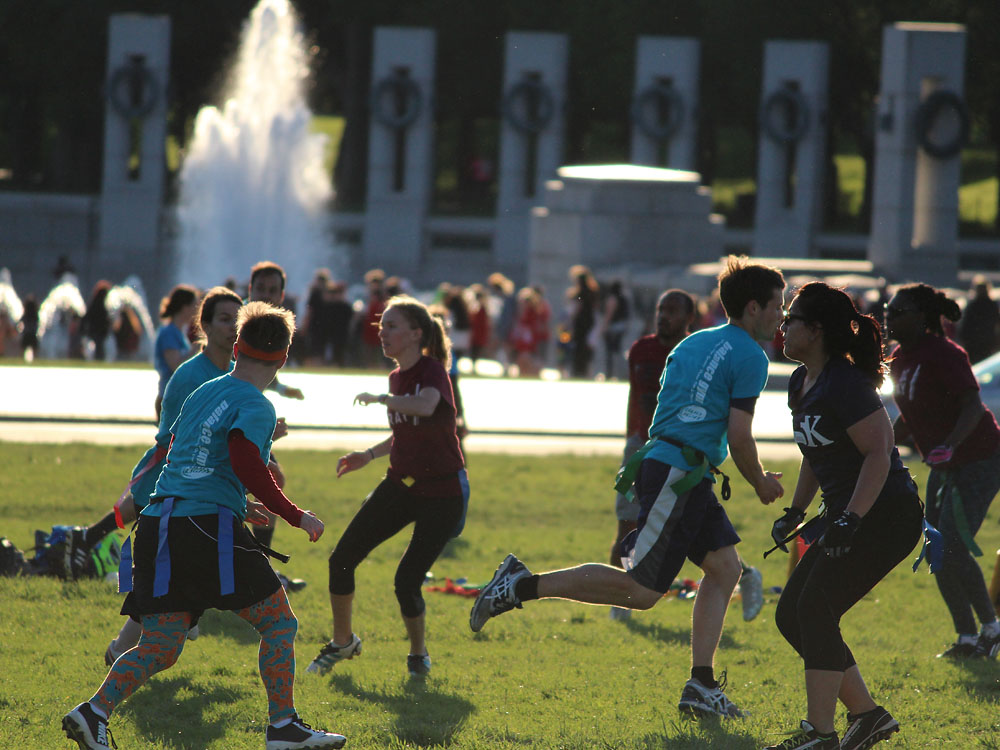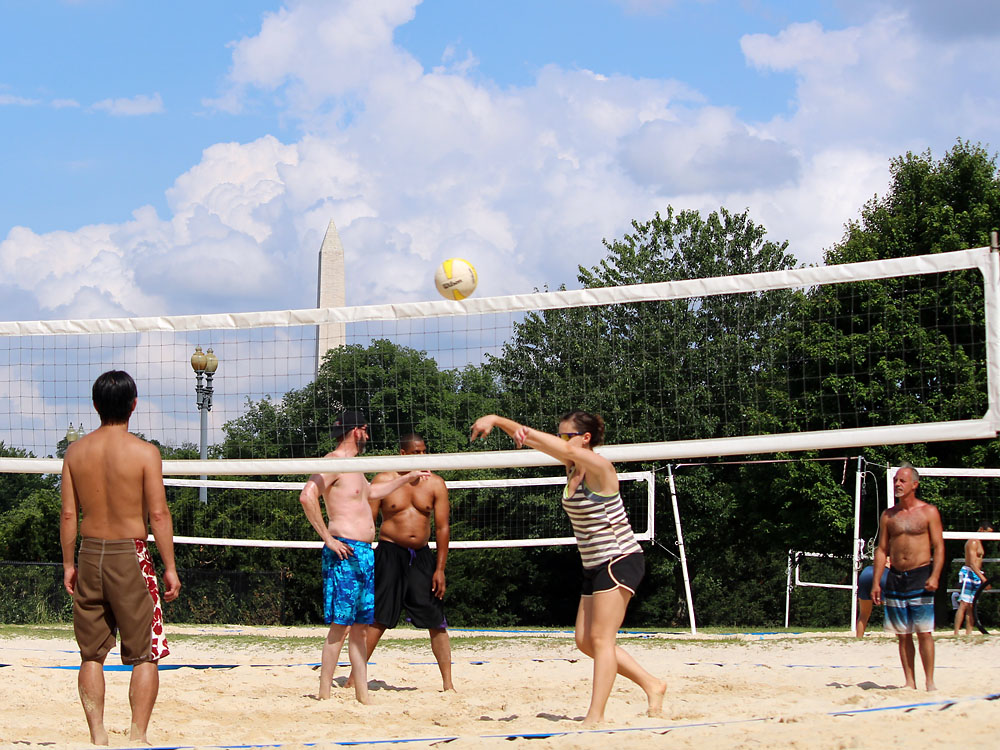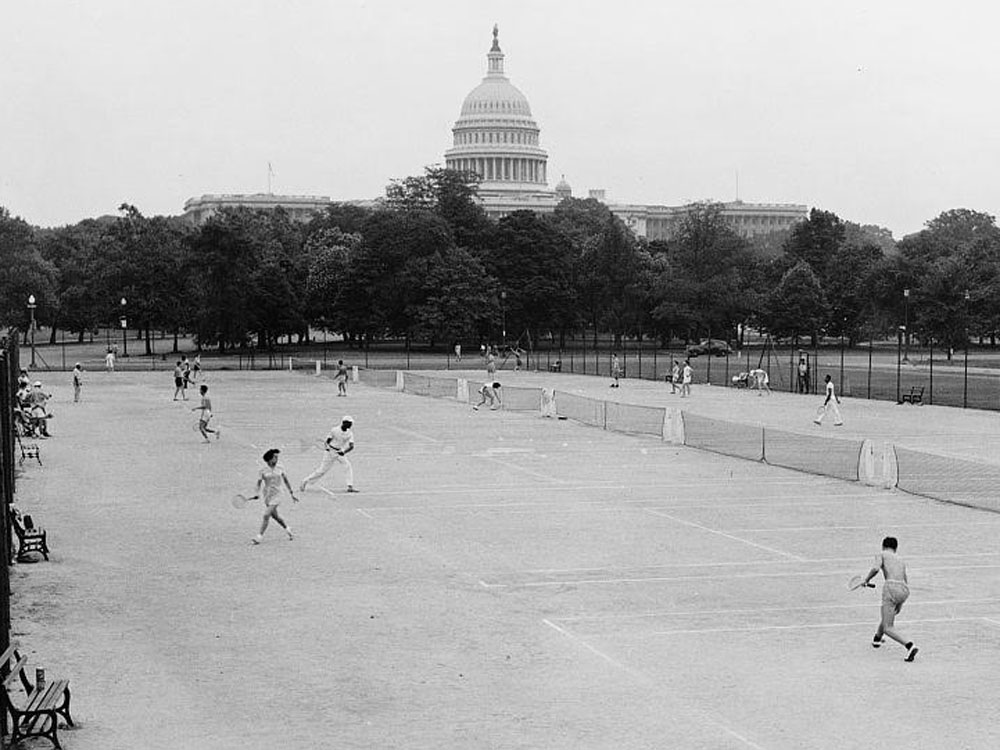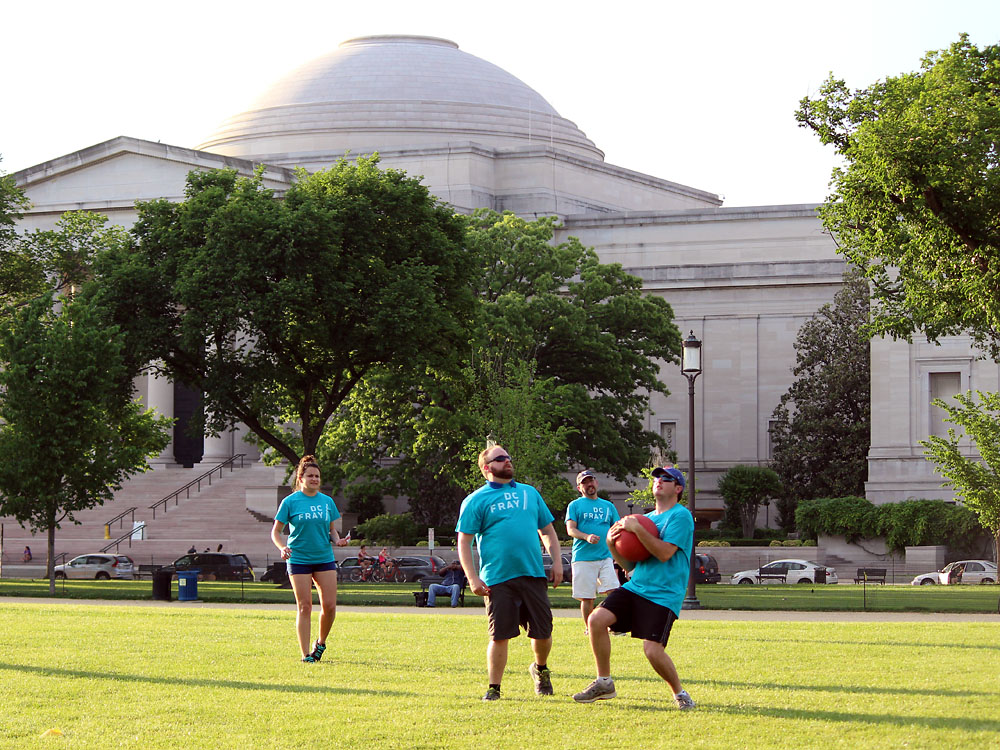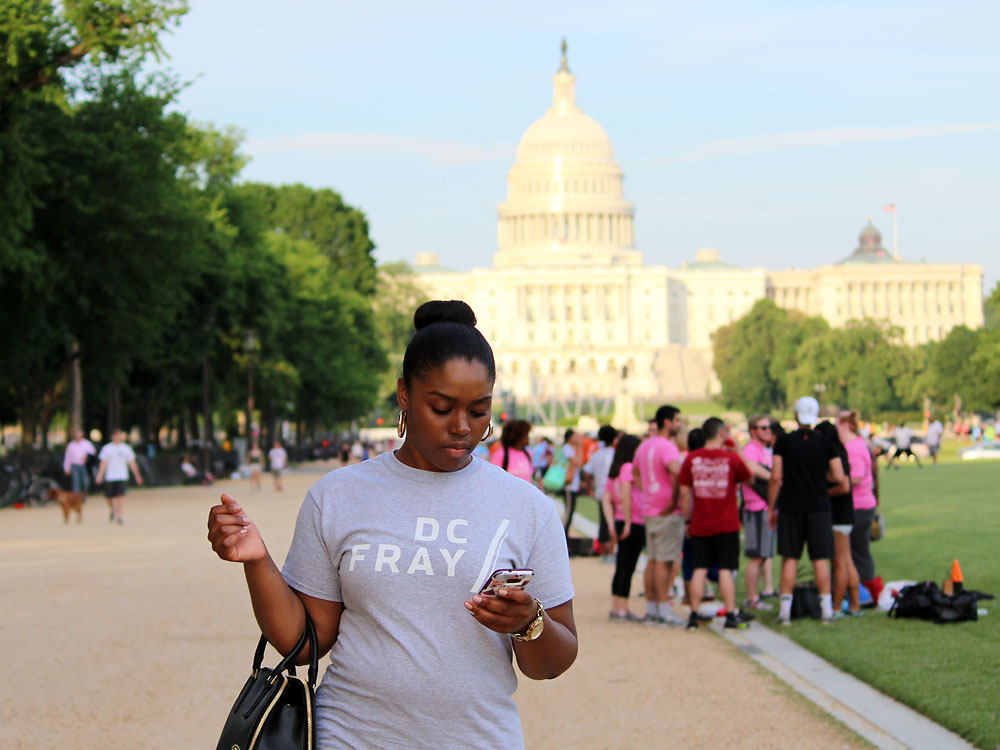By Judy Scott Feldman
The National Mall is more active than ever before in its history, with countless public activities from First Amendment demonstrations to kickball. That’s how it’s supposed to be. And should continue to be.
But in recent years public activities such as the National Book Festival and recreational sports have been denied permits and told to go elsewhere.
Now the National Park Service has announced, as reported in The Washington Post, that it plans to ban all recreational sports on the Mall starting in 2018 – not only for the Monument grounds, as the Post reports, but also for the entire area between 3rd and 17th Streets. They say the reason is to protect the newly installed turf grass. For the remaining playing fields surrounding the Mall fees would be raised from a small season rate to an hourly rate, $40 for one hour and $70 for two hours. A public comment period will open next week, the park service says.
Public activities on the Mall are not just exhilarating, with the Capitol and Washington Monument as the backdrop. They are in fact the intended purpose of the Mall from the beginning.
In his original 1791 design for this great open space in the heart of the nation’s capital, Peter (Pierre) Charles L’Enfant called the Mall a “place of general resort.” Architect Daniel Burnham and colleagues on the 1901-1902 McMillan Commission expanded L’Enfant’s concept to add hundreds of acres for public recreation.
In the 20th century the Mall had, at various times and locations, a swimming pool (on the Monument grounds), tennis courts near the National Gallery of Art, and, of course, great swaths of grass for football, softball, Frisbee, even yoga.
Protecting grass should never be a justification for eliminating the heart and soul of the Mall as the Stage for American Democracy. What’s a stage without the people?
What machinations have Park Service managers had to go through to impose a ban on recreation when the National Park Service’s own mission statement states: “The National Park Service preserves unimpaired the natural and cultural resources and values of the National Park System for the enjoyment, education, and inspiration of this and future generations. The park service cooperates with partners to extend the benefits of natural and cultural resource conservation and outdoor recreation throughout this country and the world.”
A ban on sports on the Mall is not just a bad idea, it goes against the historic character of the Mall as a nationally significant public space. And it undermines the health benefits of recreational pursuits at a time when public health is very much on the public agenda.
In an article by Thomas F. King and me, Do people have a place in the historic environment? The Anderson Ferry and the U.S. National Mall, we discuss the inadequacy of traditional historic preservation documentation to recognize public use as a determining factor in park service management of the Mall, and the need to rethink priorities.
UPDATE: Read the Coalition’s January 2018 letter to the National Park Service requesting that NPS initiate a public consultation process to discuss any recreation restrictions that would violate an important purpose for which the Mall was created — public recreation.
• Judy Scott Feldman, PhD, is a native Washingtonian, an art historian and educator, and the Chair of the National Mall Coalition.
Sports and recreation on the National Mall
Tags: sports

